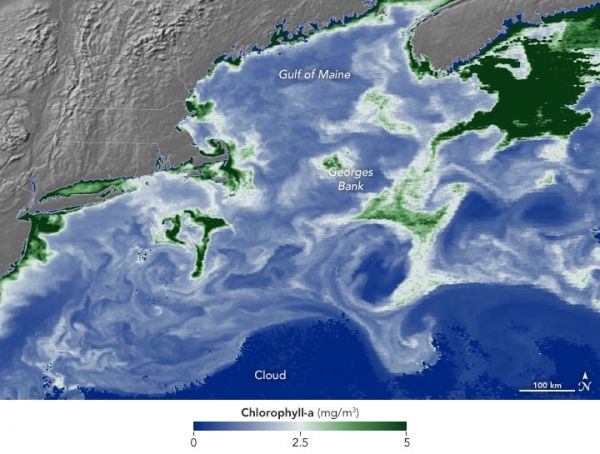Springtime blooms on land in North America are usually obvious: green vegetation sprouts and flower buds open in ways that bring bright color to the landscape. Springtime changes in the North Atlantic Ocean are less obvious to the human eye, as not all of the action takes place at the surface and much of the color is camouflaged by the dark greens, blues, and blacks of the deep sea.
Satellite sensors give us other ways to see blooms of phytoplankton, the plant-like primary producers of the ocean. The Moderate Resolution Imaging Spectroradiometer (MODIS) on NASA’s Aqua satellite observes Earth in 36 different visible, infrared, and near-infrared wavelengths. Over the past three decades, scientists have tuned the sensors and the processing of those spectral data to identify areas with high concentrations of chlorophyll-a, the primary pigment used by phytoplankton to harvest sunlight for energy.
Continue reading at NASA Earth Observatory
Image via NASA Earth Observatory


